After traveling to the Republic of Georgia in 2021, I fell in love with Georgian food. Georgia, located at the intersection of Eastern Europe and Western Asia, has a rich culinary heritage that dates back centuries. In this article, we will explore several must-try Georgian foods that will tantalize your taste buds and leave you craving more of this rich and underrated cuisine.
Georgian cuisine is a perfect blend of European and Asian influences. It is famous for its bold flavors, generous use of herbs and spices, and unique cooking techniques.

Georgian food is also famous for its use of cheese. An essential ingredient in many dishes, Georgian cuisine is often rich, heavy, and hearty. Fresh meats like pork and lamb, as well as walnuts, beans, butter, and fresh vegetables, are also common ingredients. The country’s cuisine is diverse, with each region of Georgia having its own unique specialties and variations on popular dishes.
Georgian cuisine has a rich history that dates back to ancient times. The country’s location at the crossroads of Europe and Asia meant that it was a melting pot of different cultures and culinary traditions.
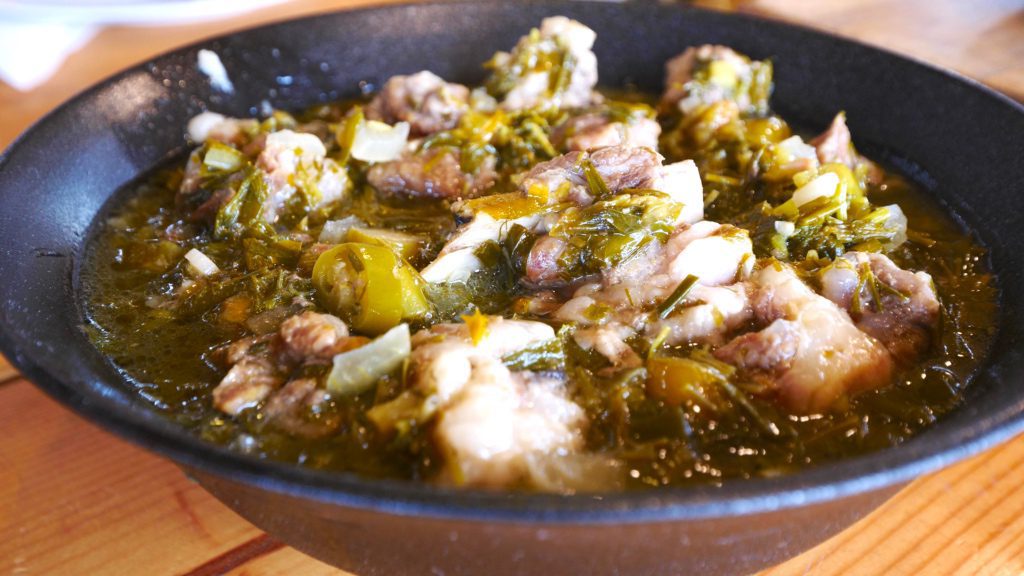
Over the centuries, nearby countries like Russia, Turkey, and Iran influenced Georgian food. The country’s long history of winemaking also played a significant role in the evolution of Georgian cuisine.
No list of Georgian staples is complete without khachapuri. This traditional cheese bread can use a variety of local cheeses, including sulguni, imeruli, and feta. The cook rolls the dough out into a flat circle and fills it with cheese, egg, and butter. There are many varieties of khachapuri, each of which comes from a different region of the country.
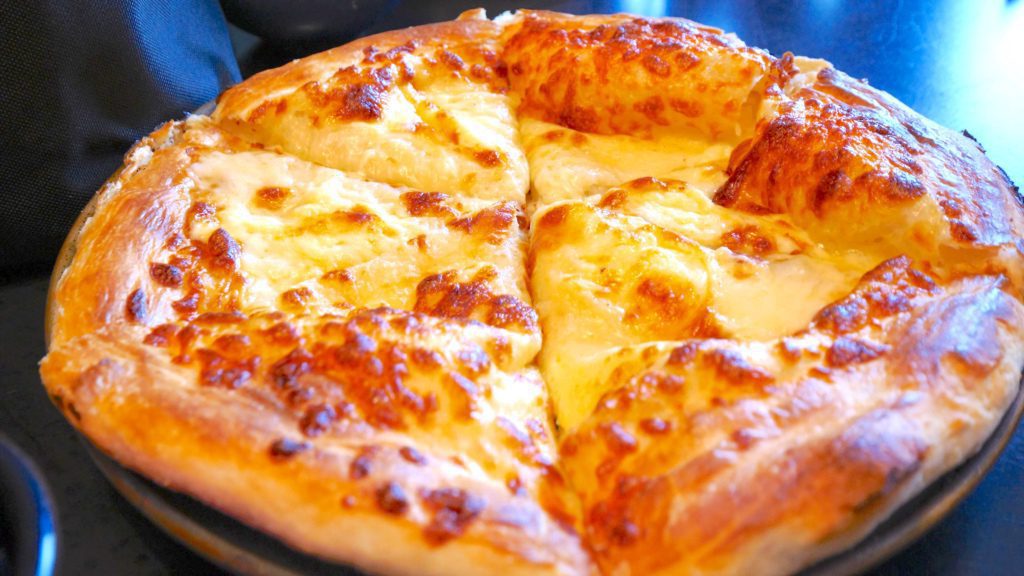
To make the most famous version, Adjarian khachapuri, the cooks fold the edges of the dough over to create a boat-like shape. This variation originated from the wives of sailors in Batumi, who would make the boat-shaped khachapuri when their husbands would set sail. The khachapuri bakes until the crust is golden brown and the cheese is melty and stretchy.

In Batumi, Retro Restaurant serves a Titanic Adjarian Khachapuri, which contains several pounds of butter, cheese, and bread and is big enough to feed six people!
Khinkali is another popular Georgian food comparable to dumplings. Originating from the town of Pasanauri, these boiled dumplings typically contain a mixture of ground meat, onions, and herbs. Other variations may contain mushrooms or even cheese.
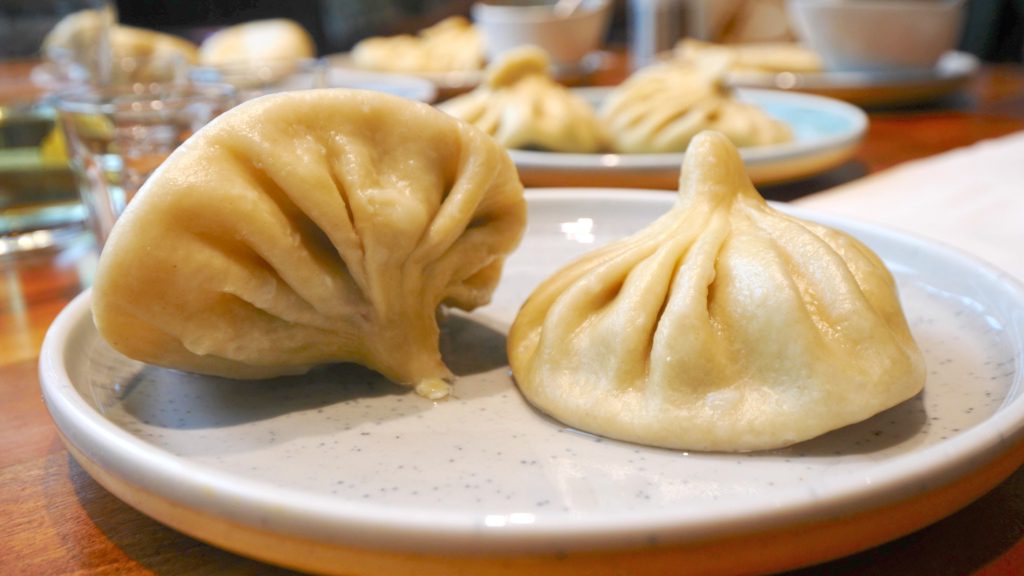
The traditional way to eat khinkali is to hold them by the knot at the top and take a small bite, sucking out the juices before eating the rest. The technique is similar to the one you’d use to eat other soup dumplings like the Chinese xiaolongbao. Not only is it traditional, but it also saves you from burning your mouth!
Mtsvadi is a traditional Georgian shish kebab consisting of chunks of fresh, marinated pork, mutton, or veal. The cook adds seasonings like salt, pepper, dill, basil, coriander, marjoram, fenugreek, and bay leaves and cooks the meat over an open flame. Mtsvadi usually comes with fresh herbs, vegetables, and bread.
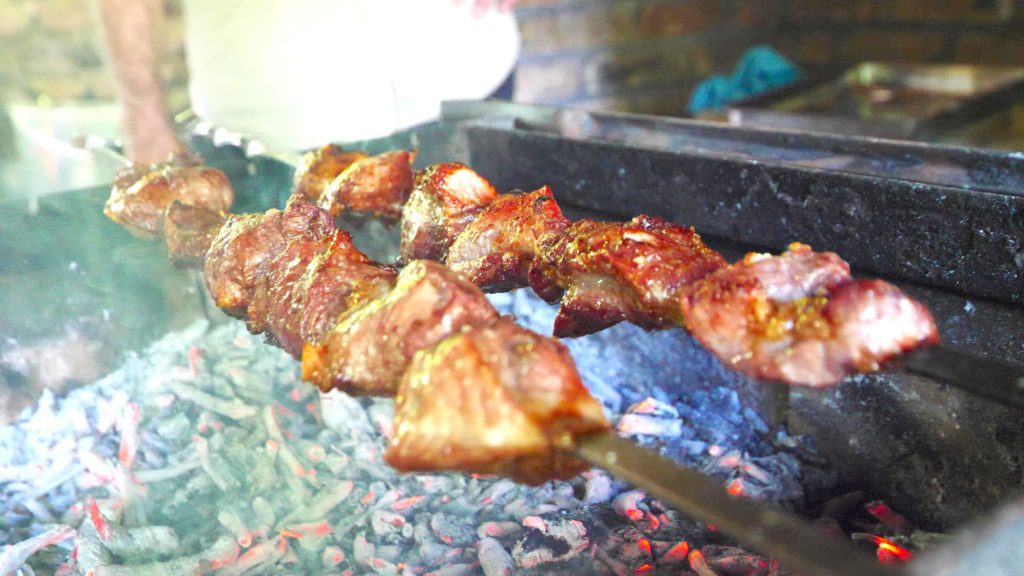
I first tried pork mtsvadi at an outdoor barbecue in Sagarejo in Georgia’s Kakheti region. My guide Tim and I ate it alongside sulguni and nadughi cheeses, fresh vegetables, and some delicious Georgian wine. It’s the ultimate Georgian barbecue!
Lobio is a hearty Georgian bean stew that features beans as its main ingredient. Red kidney beans are the most traditional, but you can use other varieties as well. It also contains garlic, onions, and walnuts, as well as herbs like coriander/cilantro, fenugreek, and paprika.
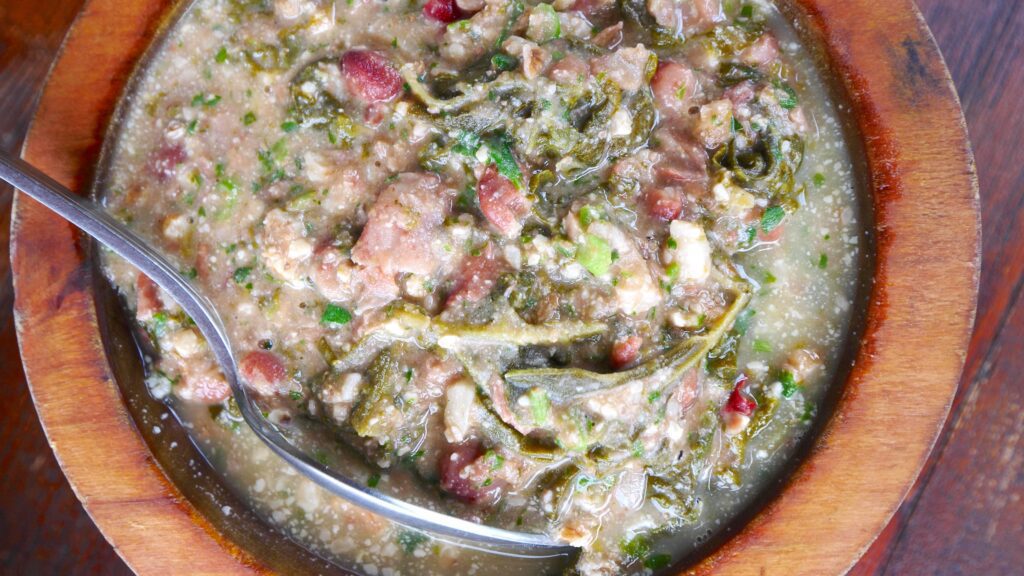
This hearty, smoky stew often comes alongside meat dishes like mtsvadi or meat-and-vegetable stews like chakapuli. Others eat it with bread and a side of pickles. I tried this dish a couple of times during my trip and enjoyed it every time. If you like your beans thick, hearty, and with a lot of flavor, you’ll like this!
Badrijani nigvzit is a classic Georgian appetizer consisting of rolled, grilled eggplant slices with a spiced walnut paste filling. The paste contains walnuts, garlic, coriander, fenugreek, vinegar, and red pepper flakes, giving it a bold, savory, and tangy flavor. Finally, the cook tops them with fresh pomegranate seeds. Some of the kinds I tried also contained lemon juice.

These flavorful veggie rolls are commonplace throughout Georgia. I ate them many times during my week-and-a-half in the country, including in the Kakheti region and in Batumi. I’m a huge fan of eggplant, so even though they’re a starter, they were often one of my favorite dishes on the table!
Churchkhela is a traditional Georgian candy. The most traditional version consists of grape juice and nuts, though modern versions use other fruit juices as well. First, the cook boils the juice into a thicker, more concentrated form. Then, they take nuts like walnuts, hazelnuts, or almonds, and string a piece of thread through them using a needle.
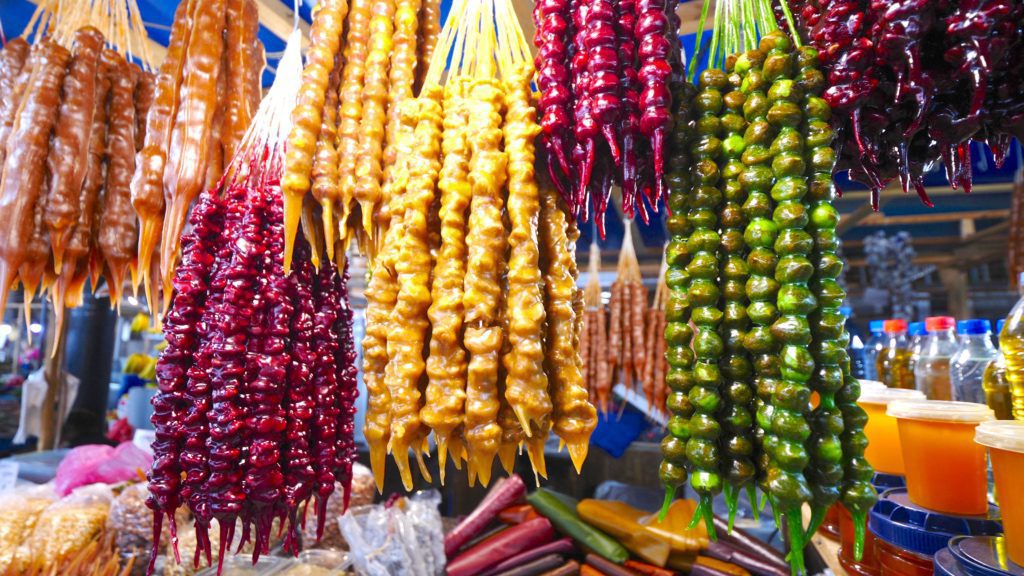
Next, they add flour and sugar to the juice and mix it well until it forms a thick paste. The cook then dips the ropes of nuts into the paste and hangs them to dry in the sun. The result is a unique and delicious candy that’s sweet, relatively healthy, and great to eat on hikes, while traveling, or between meals! My guide Tim told me that it’s like a Georgian Snickers bar, and he’s absolutely right!
Georgian wine is a perfect complement to Georgian food. The country has a long history of winemaking, and their traditional wine-making methods wines date back centuries. In fact, Georgia (along with neighboring Armenia) was among the first countries to ever produce wine!

Georgian wines often use unique indigenous grape varieties, giving them a distinct flavor and aroma. The most popular Georgian wines are reds, like Saperavi and Kindzmarauli, and whites, like Rkatsiteli and Kisi. Wine is so popular in Georgia that it comes with pretty much every meal, and your hosts are more than happy to serve you as much as you want!
Sinori is a traditional Georgian dish consisting of rolled wheat and cheese. The dish is similar to khachapuri but has a different texture and flavor. After cooking the crispy, rolled flatbread, the cooks top it with a blend of cheeses, including sulguni and feta.

I couldn’t get enough of this dish the first time I tried it. It was one of my favorites I tried in the villages outside of Batumi, Georgia. It’s rich and flaky and is essentially Georgian comfort food!
Borano is a simple yet delicious Georgian dish made with cheese boiled in butter. The dish contains a blend of local cheeses, including sulguni and imeruli. Garlic and red pepper flakes add a bit of extra flavor and a slight heat to the dish.
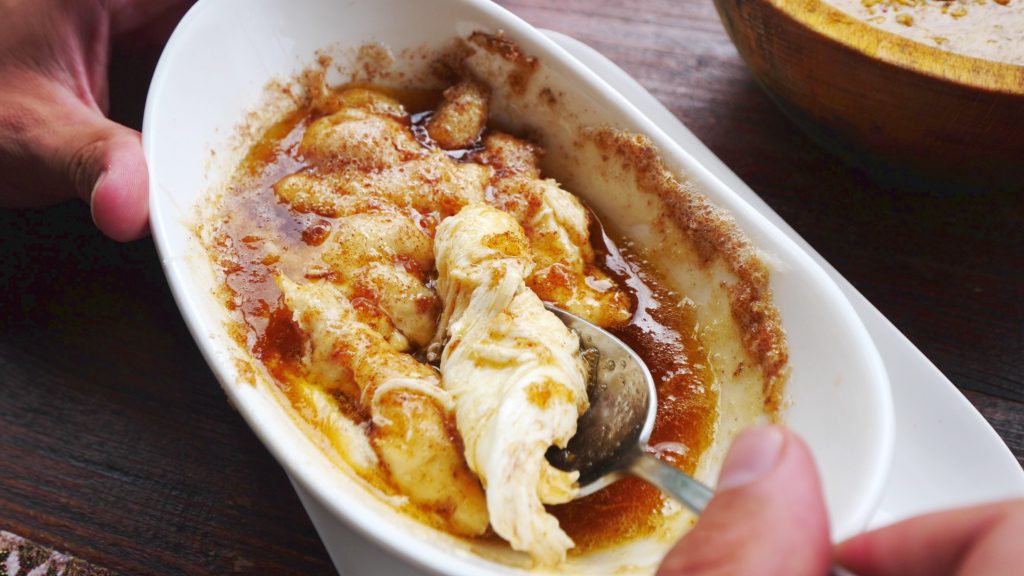
Finally, the cooks melt the cheese in butter. This was one of several cheesy dishes I tried for the first time in the villages of the Adjara region outside of Batumi. It’s every bit as fatty and rich as it sounds!
Kubdari is a traditional Georgian meat pie containing ground lamb, onions, and spices. The dough is filled with the meat mixture and then baked until golden brown. Kubdari is usually served hot and is perfect for a hearty lunch or dinner.

I tried this savory Georgian food in the town of Udabno in the gorgeous Kakheti Wine Region and fell in love with it. It’s rich, fatty, meaty, and packed with incredible flavor. If you’re a fan of lamb at all, you must try this dish!
Georgian food is a unique and flavorful cuisine that is sure to delight any foodie. From buttery and cheesy khachapuri to soupy and hearty khinkali, there are dozens of must-try dishes in this beautiful Caucasus nation.
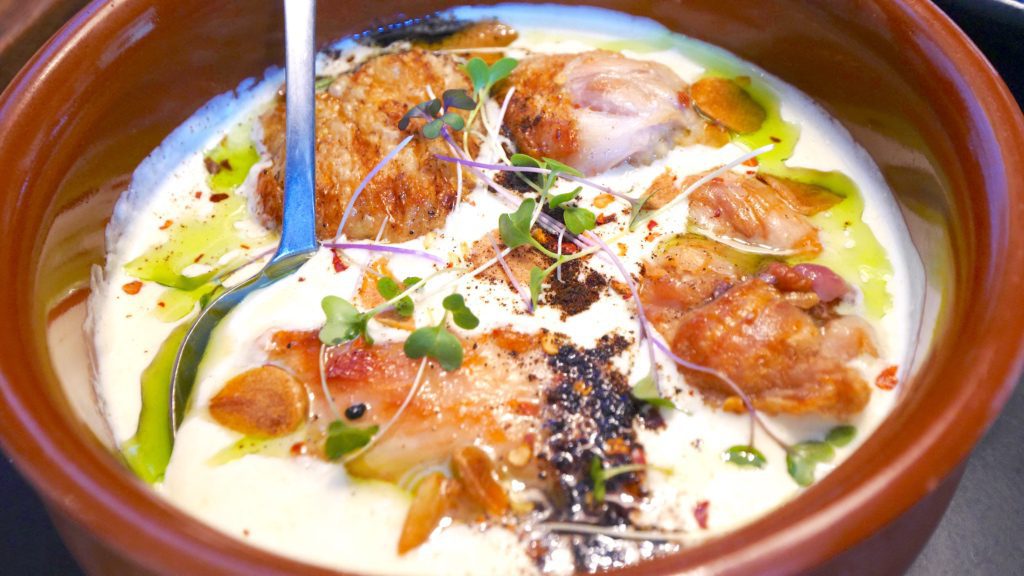
And don’t forget to pair your meal with a glass of Georgian wine for the ultimate culinary experience. So, the next time you’re looking for a new and exciting cuisine to try, give Georgian food a chance – you won’t be disappointed. Book a trip to Georgia today to experience the tantalizing flavors of Georgian food for yourself!
Counter
101 Countries • 1432 Cities